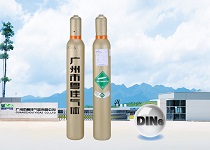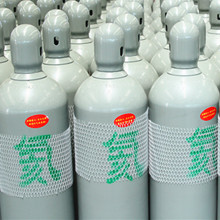为什么高纯氦气供应全球紧张?
2011-10-26 20:44:09
由于氦气在空气中的含量极低,提取和分离成本非常高,故目前在市场上流通的氦气是从天然气中提取的。在世界上仅有少数几个地方含有高比例的氦气可供提取。主要位于美国,波兰,阿尔及尼亚和俄罗斯。由于它的高价值,氦气是国际贸易中唯一的工业气体。氦气的包装有杜瓦罐、瓶组、钢瓶。氦气的贮存和运输:氦气与其他气体不同的是,由于氦的沸点特别低且汽化热很小,用于贮存和运输液体氦的容器技术要求也很高。通常,除使用高效厚绝热层绝热外,还必须用另一种廉价的低温液体(如液氮)的蒸发来屏蔽它。这仅适用于短周期贮存和短距离运输。为了远距离运输大量液氦,可以利用没有排放的承压型液氦容器。
WHEN HELIUM shortages hit the market last year, it was the party balloon business that first felt deflated. Since then, supplies of helium have gotten even tighter, pushing prices up and creating spot shortages for research, medical, and industrial users.
Just last month, Japanese gas suppliers Taiyo Nippon Sanso and Iwatani International told electronics industry customers to prepare for cutbacks of up to 30% in their normal helium supplies. In the electronics industry, helium is used to create an inert, clean environment.
Equipment failures, bad weather, and scheduled plant maintenance have all conspired to limit helium output. Meanwhile, significant new supplies from Algeria and Qatar have not lived up to expectations. Industrial gas companies say it will be at least two years before the shortages start to ease.
CHILLING DETAIL Helium cools magnets in MRI machines, making possible high-resolution anatomical images like this one of the cranium.
While helium is abundant in the universe, it is rare on Earth. A result of uranium and radium disintegration, helium is found in natural gas at concentrations ranging between 0.2 and 7% by volume. With a boiling point near –269 oC, it is employed to cool the superconducting magnets used in the molecular analysis technique known as magnetic resonance spectroscopy and in nuclear magnetic resonance imaging equipment to diagnose disease.
Other properties including buoyancy, ionization potential, thermal conductivity, and nonflammability put helium in demand to fill dirigibles, weld metal, and cool optical fibers. As an element that exists as a single small atom, a stream of helium can be injected into machinery and other equipment to check for the tiniest leaks.
Most helium produced today is extracted from natural gas fields in the U.S. As gas production has declined, so has production of helium. Over the past few years, the U.S. government has helped supplement helium supplies by selling from reserves it maintains. But even the government sales, which now account for about one-third of global supply, can't keep pace with increased demand. And the government expects to complete its sell-off by 2015.
THE LATEST CRIMP in the helium supply line developed when ExxonMobil told its customers that it plans to shut down its Shute Creek helium plant in southwestern Wyoming for maintenance. When that happens over a two-week period this month, a ripple will spread through the global helium supply chain. Taiyo Nippon communicated its warning to Japanese customers after learning of ExxonMobil's plans, says Phil Kornbluth, executive vice president of Matheson Tri-Gas, the U.S. subsidiary of Taiyo.
Taiyo gets a large portion of the helium it distributes from Shute Creek. Kornbluth estimates that this one facility alone accounts for about 20% of the global helium supply, which is roughly 175 million m3 per year. With little inventory anywhere in the world, Japanese electronics customers are likely not the only ones to feel the impact.
Other crimps in the helium supply chain have been less predictable. The Bureau of Land Management, which is charged with selling government helium reserves, could not supply the noble gas when compressors failed for several days in the summer of 2006 and then again when severe weather interrupted power for several days early this year. "Supplies are so tight that it doesn't take much to get everyone twitching," says Leslie Theiss, who manages government sales out of Amarillo,Texas.
Theiss points out that storms at the start of the year interrupted power to major helium refiners in Kansas and Oklahoma, again stretching supplies. "We sometimes get calls from users asking us if we are restricting supplies," Theiss says. "It's just not true. We are producing everything we are supposed to produce."
Major industrial gas suppliers, including Praxair, Air Products & Chemicals, and Air Liquide, are warning their customers to expect the shortages to continue. "The global helium industry supply-and-demand balance will continue to be tight for the foreseeable future," says John Van Sloun, general manager of helium and rare gases at Air Products. He adds that "new sourcing opportunities around the world are both scarce and slow to develop."
Jane Hoffman, global business director for helium at Praxair, estimates that helium demand grows at 5% a year. But because helium is a by-product of natural gas production, industrial gas firms can't simply build new helium plants. "We encourage the oil and gas guys to separate the helium from the natural gas they process, but ultimately, it is their investment to make," she says.
Hoffman and Kornbluth both point out that helium production is also dependent on the natural gas cycle. During winter, when demand for heating gas is strong in North America and Europe, more helium can be separated. In the summer and fall, when gas demand is low, less helium is available. Summer and fall are also the times of the year when many producers take down their helium facilities for maintenance.
Industrial gas producers are encouraging customers to bite the bullet and buy helium recycling units to take some of the pressure off supplies. But recycling equipment is expensive, and recovery can be tricky, Hoffman explains.
However, until helium projects in Qatar and Algeria come up to speed and a project now under discussion in Russia comes on-line, this normally buoyant business will remain in the doldrums. "Helium will be tight at least through 2009, and our guess is that we won't have ample supplies again until 2011," Kornbluth says.
Just last month, Japanese gas suppliers Taiyo Nippon Sanso and Iwatani International told electronics industry customers to prepare for cutbacks of up to 30% in their normal helium supplies. In the electronics industry, helium is used to create an inert, clean environment.
Equipment failures, bad weather, and scheduled plant maintenance have all conspired to limit helium output. Meanwhile, significant new supplies from Algeria and Qatar have not lived up to expectations. Industrial gas companies say it will be at least two years before the shortages start to ease.
CHILLING DETAIL Helium cools magnets in MRI machines, making possible high-resolution anatomical images like this one of the cranium.
While helium is abundant in the universe, it is rare on Earth. A result of uranium and radium disintegration, helium is found in natural gas at concentrations ranging between 0.2 and 7% by volume. With a boiling point near –269 oC, it is employed to cool the superconducting magnets used in the molecular analysis technique known as magnetic resonance spectroscopy and in nuclear magnetic resonance imaging equipment to diagnose disease.
Other properties including buoyancy, ionization potential, thermal conductivity, and nonflammability put helium in demand to fill dirigibles, weld metal, and cool optical fibers. As an element that exists as a single small atom, a stream of helium can be injected into machinery and other equipment to check for the tiniest leaks.
Most helium produced today is extracted from natural gas fields in the U.S. As gas production has declined, so has production of helium. Over the past few years, the U.S. government has helped supplement helium supplies by selling from reserves it maintains. But even the government sales, which now account for about one-third of global supply, can't keep pace with increased demand. And the government expects to complete its sell-off by 2015.
THE LATEST CRIMP in the helium supply line developed when ExxonMobil told its customers that it plans to shut down its Shute Creek helium plant in southwestern Wyoming for maintenance. When that happens over a two-week period this month, a ripple will spread through the global helium supply chain. Taiyo Nippon communicated its warning to Japanese customers after learning of ExxonMobil's plans, says Phil Kornbluth, executive vice president of Matheson Tri-Gas, the U.S. subsidiary of Taiyo.
Taiyo gets a large portion of the helium it distributes from Shute Creek. Kornbluth estimates that this one facility alone accounts for about 20% of the global helium supply, which is roughly 175 million m3 per year. With little inventory anywhere in the world, Japanese electronics customers are likely not the only ones to feel the impact.
Other crimps in the helium supply chain have been less predictable. The Bureau of Land Management, which is charged with selling government helium reserves, could not supply the noble gas when compressors failed for several days in the summer of 2006 and then again when severe weather interrupted power for several days early this year. "Supplies are so tight that it doesn't take much to get everyone twitching," says Leslie Theiss, who manages government sales out of Amarillo,Texas.
Theiss points out that storms at the start of the year interrupted power to major helium refiners in Kansas and Oklahoma, again stretching supplies. "We sometimes get calls from users asking us if we are restricting supplies," Theiss says. "It's just not true. We are producing everything we are supposed to produce."
Major industrial gas suppliers, including Praxair, Air Products & Chemicals, and Air Liquide, are warning their customers to expect the shortages to continue. "The global helium industry supply-and-demand balance will continue to be tight for the foreseeable future," says John Van Sloun, general manager of helium and rare gases at Air Products. He adds that "new sourcing opportunities around the world are both scarce and slow to develop."
Jane Hoffman, global business director for helium at Praxair, estimates that helium demand grows at 5% a year. But because helium is a by-product of natural gas production, industrial gas firms can't simply build new helium plants. "We encourage the oil and gas guys to separate the helium from the natural gas they process, but ultimately, it is their investment to make," she says.
Hoffman and Kornbluth both point out that helium production is also dependent on the natural gas cycle. During winter, when demand for heating gas is strong in North America and Europe, more helium can be separated. In the summer and fall, when gas demand is low, less helium is available. Summer and fall are also the times of the year when many producers take down their helium facilities for maintenance.
Industrial gas producers are encouraging customers to bite the bullet and buy helium recycling units to take some of the pressure off supplies. But recycling equipment is expensive, and recovery can be tricky, Hoffman explains.
However, until helium projects in Qatar and Algeria come up to speed and a project now under discussion in Russia comes on-line, this normally buoyant business will remain in the doldrums. "Helium will be tight at least through 2009, and our guess is that we won't have ample supplies again until 2011," Kornbluth says.






